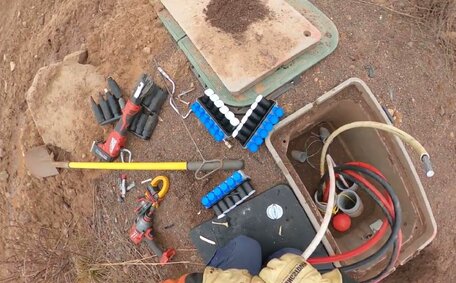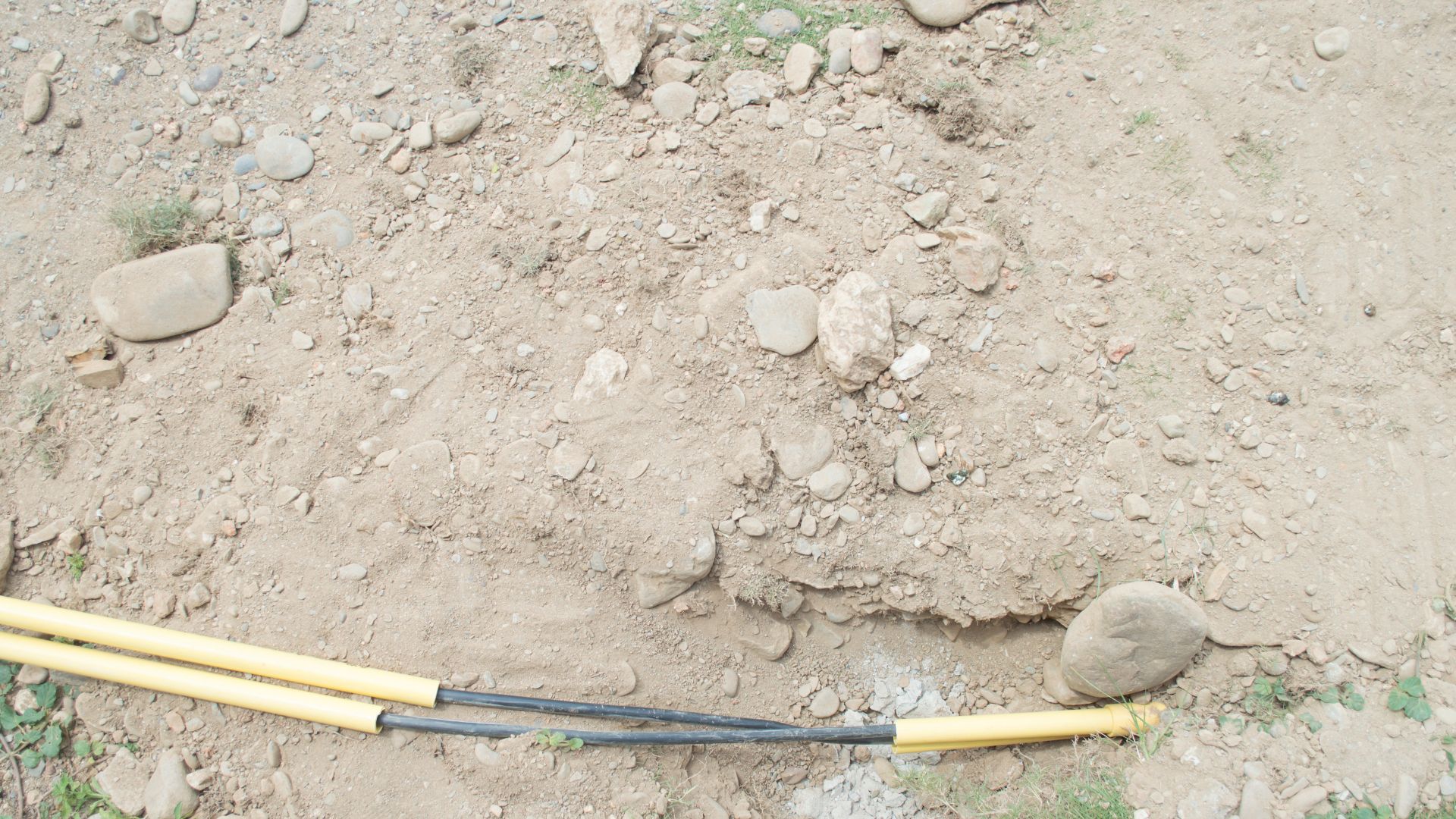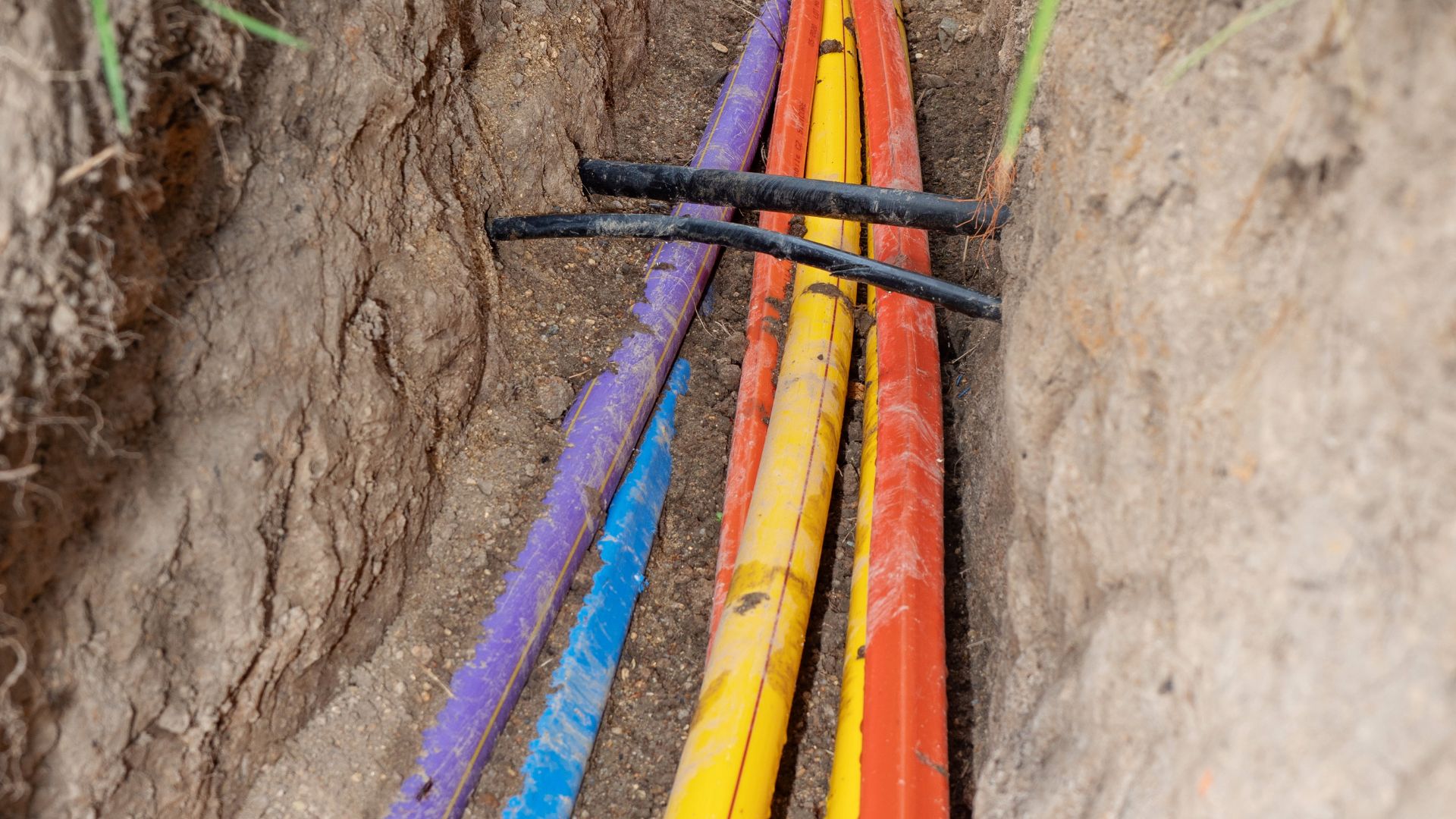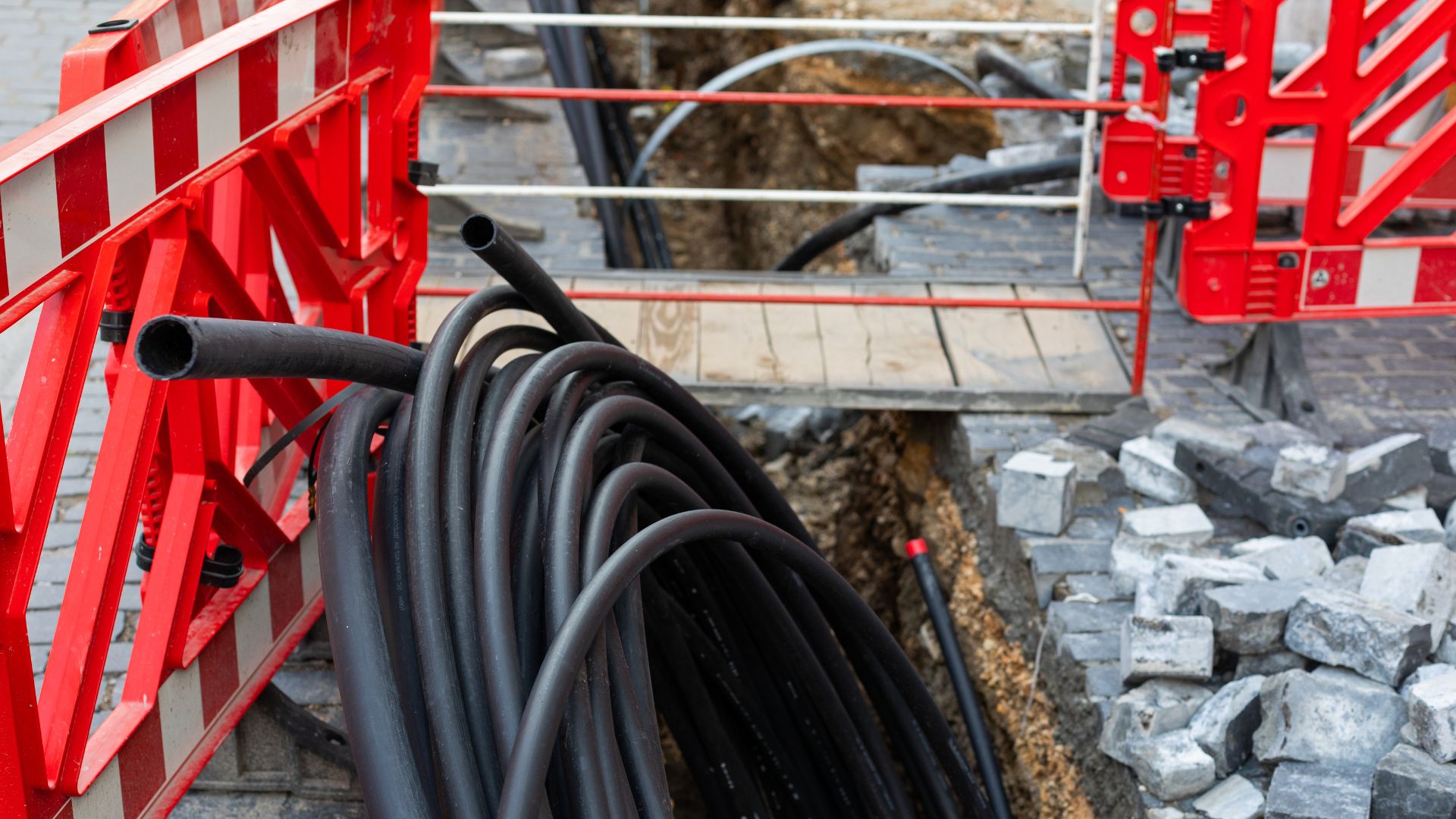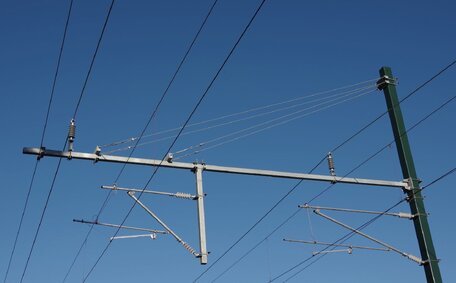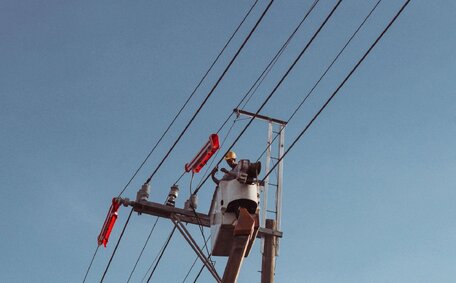Ever wondered what happens to power when storms hit and trees come crashing down? The answer often lies in those overhead power lines strung across streets and backyards. As extreme weather events become more frequent, these overhead lines are proving to be increasingly vulnerable to damage, leading to power outages, safety hazards, and costly repairs.
This blog explores the long-term benefits of underground solutions, showing why the shift to underground power lines is gaining momentum across residential and urban development. Let’s dig in.
What Are Underground Power Lines?
Underground power lines are electrical lines buried beneath the surface, unlike overhead lines, which are suspended from power poles. These buried cables use specialised conduits, protective sheathing, and often extra equipment to deliver power safely and efficiently beneath streets, footpaths, and green spaces.
![Underground Consumer Mains In Ground Underground Consumer Mains Ground]()
Installation involves extensive planning and usually includes trenching, directional drilling, and the use of heavy-duty insulation to shield the electrical lines from moisture and pressure. While the construction process requires more time and resources upfront, the payoff comes in durability and safety.
In fact, underground service lines are quickly becoming the norm in newer suburbs and developments. Modern urban planning now often incorporates underground infrastructure to streamline power access and maintain visual appeal. As Australia’s cities grow and adapt to changing environmental risks, this foundational shift in electrical infrastructure is setting a new standard.
Improved Safety & Reduced Hazards
One of the biggest advantages of underground power is how much safer it is, both physically and environmentally. Think about it: no overhead wires snapping in the wind, no power poles falling onto roads, and a far lower risk of bushfire ignition.
During weather events like high winds or storms, overhead power lines are notorious for breaking or shorting out. This can not only cause power outages but also pose serious threats to nearby residents and responders. With underground lines, those dangers are virtually eliminated. The wires are safely out of reach, protected from trees, debris, and external factors like car accidents.
There’s also a strong environmental case. Fallen overhead lines are known culprits behind bushfire risk, especially in dry, high-risk areas. By switching to underground cables, councils and developers are actively supporting safer communities and helping reduce the impact of natural disasters.
For urban areas—particularly around schools, parks, and densely populated zones—public safety is dramatically improved. Residents benefit from fewer hazards, and councils face fewer liability issues from damaged infrastructure.
And it’s not just about major disasters. Even minor faults can cause interruptions or pose hidden threats. With underground power connections, those incidents are far less frequent and easier to isolate. Simply put, going underground offers peace of mind for everyone, from property owners to emergency services.
Better Aesthetic Appeal
Overhead power lines can turn even the nicest street into a tangled mess of poles and wires. They interrupt natural beauty, contribute to visual clutter, and break up clean street design.
Underground infrastructure solves that instantly. With electrical lines hidden from view, neighbourhoods feel more open, tidy, and welcoming. For property owners and developers, this clean look adds genuine value. It’s not just about appearances—increased property values contribute directly to long-term return on investment.
Homebuyers are drawn to areas with strong curb appeal, where the focus is on landscaping and architecture, not cables and poles. Local councils also appreciate the planning flexibility underground systems allow, giving them more options for pedestrian-friendly zones, public art, and green space.
By reducing above-ground clutter, communities can enjoy better aesthetics without sacrificing reliability or performance. It’s a small change that makes a big visual difference.
Greater Reliability & Fewer Outages
![Different Types Of Underground Mains Types Underground Mains]()
When it comes to power reliability, underground lines stand head and shoulders above their overhead counterparts, without being visible at all. Traditional power poles and overhead lines are vulnerable to just about everything: trees, vehicles, high winds, and even curious wildlife. Every one of those external factors increases the chance of electrical faults and power outages.
Underground cables, on the other hand, are safely out of harm’s way. This makes them ideal for locations with frequent weather conditions changes, especially along coastal zones or bushland fringes. Areas hit hard by bad weather, like storms or cyclones, benefit enormously from this level of protection.
Fewer faults don’t just mean fewer power outages. They also lead to cost savings for energy providers and less inconvenience for residents and businesses alike. Instead of scrambling for temporary fixes after every storm, energy networks can focus on proactive maintenance and strategic infrastructure planning.
Real-world examples are already showing results. Councils in parts of New South Wales and Victoria have trialled underground power systems to reduce outages caused by falling branches or damaged poles, and early data is promising. These projects demonstrate that investment in buried cables is more than just aesthetic or safety-driven. It’s about future-proofing the grid.
As more communities demand storm protection and dependable electricity, underground power connections will continue to gain ground. It’s a smart, forward-thinking solution—backed by numbers, not just promises.
Long-Term Cost Effectiveness
Yes, there are upfront cost considerations when installing underground service lines. The construction process demands specialised crews, extra equipment, and more time. But over the long run? The scales tip in favour of underground every time.
Why? Because these systems require significantly less maintenance. Unlike overhead lines that need regular inspections, pruning around trees, and reactive repairs after storms, underground infrastructure remains stable and secure. That translates to lower electrical maintenance budgets for councils and providers.
Plus, you’re avoiding the hidden costs of frequent outages: emergency callouts, temporary fixes, and public frustration. Fewer breakdowns mean more reliable service—and fewer complaints.
From an infrastructure planning perspective, underground power offers real long-term value. It supports future-proofing strategies, particularly in expanding suburbs or urban development zones where growth is expected.
While the short-term price tag may be higher, the long-term payoff in stability, public satisfaction, and reduced running costs makes it a cost effective choice—especially for those planning for decades, not just years.
Environmental & Community Impact
Burying power lines isn’t just about keeping the lights on— it’s about protecting the environment and creating better spaces for people to live. Traditional overhead power lines can interfere with native vegetation and wildlife movement, especially in environmentally sensitive zones.
By shifting to underground infrastructure, environmental impact is minimised. Wildlife habitats stay intact, and there’s less disruption to local ecosystems during installation and maintenance. Fewer overhead wires also mean lower noise and visual pollution, especially in tranquil suburbs and green corridors.
From a community wellbeing perspective, underground lines support a higher quality of life. Cleaner streets, quieter nights, and reduced stress around blackout risks all contribute to a more liveable urban environment.
As cities expand and move toward eco-friendly infrastructure, integrating underground systems is a logical step. These setups align with broader sustainability goals and even complement renewable energy projects by creating more resilient, flexible grids.
In the long run, smarter urban planning isn’t just about reliability and safety. It’s about building places people are proud to call home.
Challenges & Considerations
No solution is perfect—and underground power does come with several challenges. The most obvious? Installation cost and time. Burying electrical lines requires more materials, skilled labour, and sometimes additional equipment, particularly over long distances or in rocky terrain.
There’s also the issue of fault access. Unlike overhead power, where technicians can quickly spot a broken wire, underground lines require specialised detection tools to pinpoint issues under the ground. This can extend repair times in some cases.
Additionally, not all landscapes are suitable. Areas prone to flooding or with unstable soil may face limitations when it comes to laying underground cables.
Still, these hurdles aren’t deal-breakers. With smart planning, most challenges can be addressed, and the long-term benefits of going underground often outweigh the drawbacks.
The Future of Power Infrastructure in Australia
Across Australia, electrical modernisation is no longer a buzzword—it’s a policy goal. From city councils to national regulators, there’s a growing push to overhaul outdated transmission infrastructure and invest in urban development that supports safer, cleaner energy.
Newer suburbs are already being built with underground power lines as standard. These communities are designed from the ground up with long-term resilience in mind, factoring in climate resilience, cost effectiveness, and minimal disruption.
![Underground Wiring Set Up Underground Wiring Set]()
Programs driven by both federal and local governments are helping fast-track this transition. Even research bodies like Curtin University are examining the benefits of underground power as part of smarter, more adaptive city planning.
In short, the future of power infrastructure is buried—and that’s a good thing. It’s not just about staying ahead of weather events, but about creating a network that can grow, evolve, and support Australia’s energy needs for generations.
Ready to Upgrade? Let’s Talk Underground Solutions
Safer streets, better views, and fewer power outages—those are just a few of the reasons homeowners and developers are switching to underground power connections.
If you’re planning a new build, upgrading old overhead power lines, or want to explore the benefits of underground systems, Bright Force Electrical is here to help. Our expert team can walk you through the entire installation process and ensure your project meets today’s highest safety and performance standards.
With proven experience across all types of underground service lines, we’ll help you design a system that works for your property, your budget, and your long-term goals. Let’s make power safer, cleaner, and smarter—starting now. Contact Bright Force Electrical today
